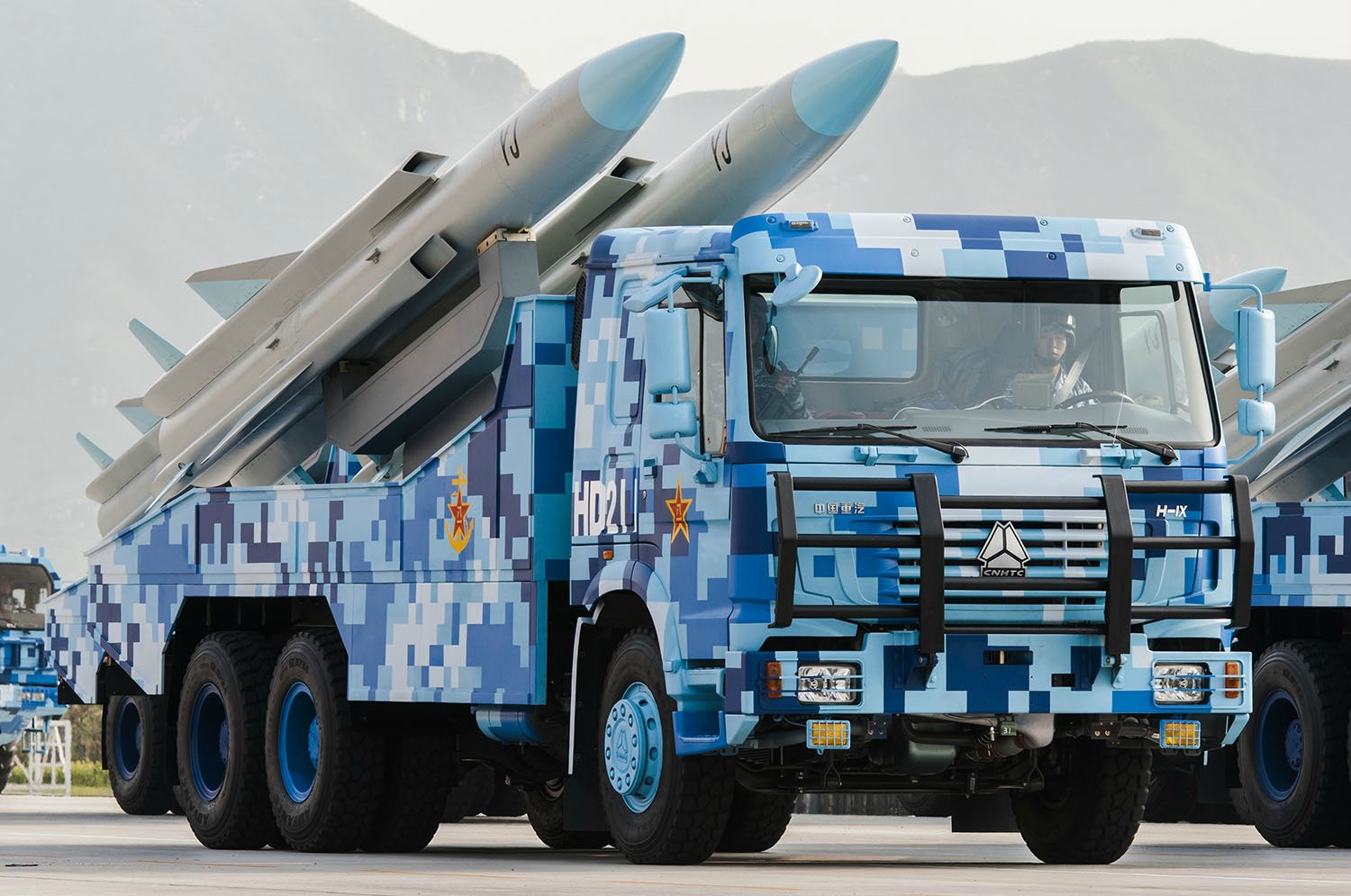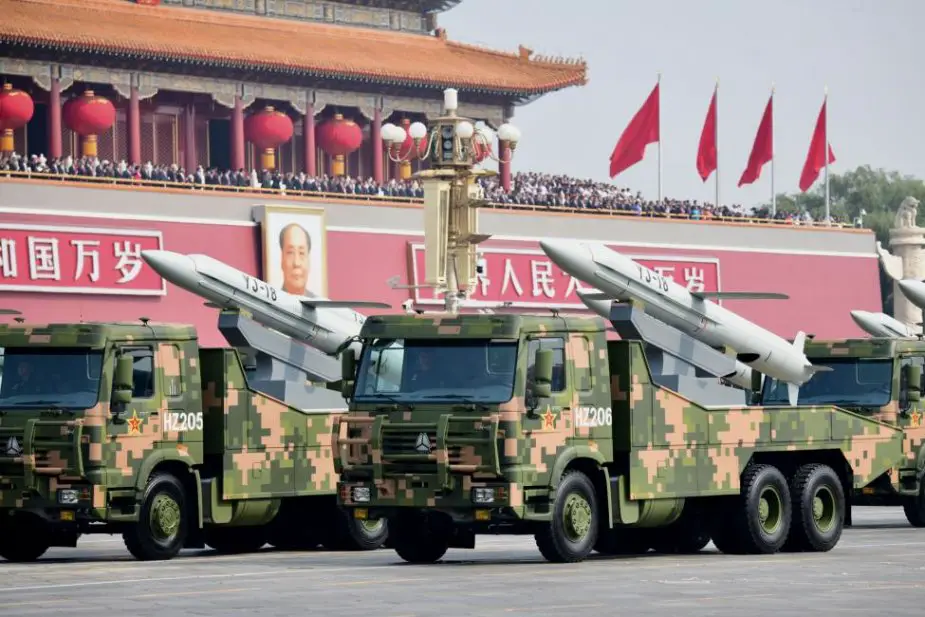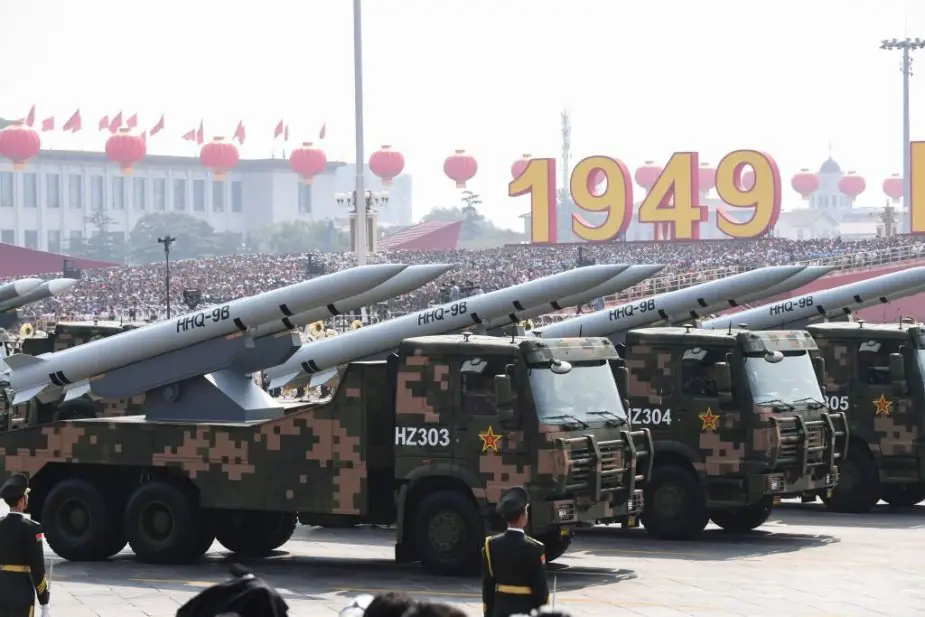A variety of shore-to-ship missiles, ship-to-ship missiles, "YJ-12" and "YJ-18/18A" as well as the latest ship-borne air defence weapons "HHQ-9A" were shown as part of the naval battle group formations that marched through Beijing's in a military parade marking the 70th founding anniversary of the People's Republic of China.
 YJ-12 air-launched, anti-ship cruise missile (ASCM) (Picture source: Chinese Internet)
YJ-12 air-launched, anti-ship cruise missile (ASCM) (Picture source: Chinese Internet)
The YJ-12B shore-to-ship missiles, which made their debut in China's military parade, can hit large and-medium-sized ships and play an important role in China's coastal defence system. An upgraded version of YJ-12 supersonic anti-ship missile, YJ-12B boasts a maximum range of 310 miles and could be stationed in remote islands, such as those in the South China Sea. China claims that the missile can sink medium to large vessels during surprise attacks and will serve as a cornerstone for the country's naval defence system.
The YJ-12 is an air-launched, anti-ship cruise missile (ASCM) that China deploys on its H-6K medium-range strategic bombers. The YJ-12 has a range of 400 km, can reach speeds of up to Mach 3, and is capable of performing air-borne evasive manoeuvres before hitting its target. [1] China began developing the YJ-12 during the 1990s and began deploying it aboard its bombers in the 2000s. While the YJ-12 is air-launched, the CM-302 export variant can be launched from air, land, or sea platforms and used in a land-attack role.
The YJ-12 poses a number of a number of security concerns for U.S. naval forces in the Pacific and is considered the “most dangerous anti-ship missile China has produced thus far.” [2] The danger posed by the YJ-12 comes from its range of 400 km, making it the longest-ranged ACBM ever engineered, and its ability to travel at high rates of speed (up to Mach 3). This makes it difficult for Aegis Combat Systems and SM-2 surface-to-air missiles that protect U.S. carrier strike groups to identify and engage the missile since it can be launched beyond their engagement ranges, which greatly reduces the U.S. Navy’s time to react. Protection against the YJ-12 is even more difficult due to its cork-screw-like turns which allow it to evade final defences. With the combination of Chinese Flankers, YJ-12’s can potentially reach up to 1,900km which could cause an even larger problem for the U.S. than China’s DF-21D ASBM. Deployment of the YJ-12 and the development of related ASCMs also demonstrates China’s desire to field anti-access and area denial capabilities in case of future conflict.
 YJ-18 Beijing's latest anti-ship cruise missiles (Picture source: Chinese Internet)
YJ-18 Beijing's latest anti-ship cruise missiles (Picture source: Chinese Internet)
YJ-18 and YJ-18A are Beijing's latest anti-ship cruise missiles. Being paraded for the first time, the two missiles can be launched from submarines as well as ships. They have been described as China's 'secret weapons' for naval warfare. Both missiles can be launched vertically from vessels and travel as fast as three times the speed of sound, it is claimed. YJ is the acronym for 'eagle strike' in Chinese.
The YJ-18 is a vertically-launched, anti-ship cruise missile (ASCM) that can travel at supersonic speeds of up to Mach 3 and has a range of 540km. The YJ-18 carries up to a 300 kg high explosive (HE) warhead that can take out a destroyer-sized ship and severely damage a carrier-sized vessel. The PLA Navy deploys the YJ-18 on its Luyang III DDG and Type 055 CG surface combatant ships and Song-, Yuan-, and Shang-class attack submarines. Although China currently has only one Luyang III destroyer with a vertical-launch system capable of firing the YJ-18, it plans to have ten more ships operational by 2017.
The YJ-18’s ability to accelerate to supersonic speeds close to its target makes it difficult for ships to destroy the incoming missile with onboard guns. This ASCM also increases the stand-off distance for Chinese vessels and contributes to their anti-access area denial (A2/AD) capabilities. China’s A2/AD capabilities could prove critical during a conflict in the western Pacific and adds to its growing arsenal of anti-ship cruise and ballistic missiles.
 HHQ-9 Long Range Air Defence Missiles (Picture source: Chinese Internet)
HHQ-9 Long Range Air Defence Missiles (Picture source: Chinese Internet)
The HQ-9 is a long-range surface-to-air missile intended to counter a wide spectrum of airborne threats such as supersonic aircraft, helicopters cruise missiles and unmanned aerial vehicles (UAVs). It was designed by the China Academy of Defence Technology to counter targets at ranges of up to 200 kilometres and altitudes of up to 30,000 meters. The HQ-9 missile is utilized by a mobile ground-based air defence known as HQ-9A and its naval version which is being provided to surface combatants.
The HQ-9B or HHQ-9B is a new vertical launch, long-range, surface-to-air missile (SAM) developed for the Chinese People's Liberation Army (PLA) to engage airborne targets at ranges of up to 250 kilometres. The HHQ-9A missile system provided to Type 052C destroyers has eight six-cell Vertical Launch Systems (VLS) with six of them at the bow deck and the remaining two at the stern.
The Chinese designed VLS features a cylindrical shape and "cold launch" in comparison with Western VLS such as Mk-41 and Sylver which are rectangular and use "hot launch". The main difference between cold and hot launches is that the rocket motor ignites out or in the launch tube. The Chinese VLS is neither based upon the Russian revolver launch system also featuring six-cell.
Each HQ-9 launcher contains four missiles stored in individual containers and is transported on Taian TA5380 8×8 high mobility chassis. HQ-9’s standard HT-233 engagement radar can track 100 targets and engage 50 of them at a range of 100 km. A normal PLA HQ-9 battery includes “a command vehicle, six control vehicles, 6 targeting radar vehicles, 6 search-radar vehicles, 48 missile-launch vehicles, and 192 missiles.” HQ-9 can use a variety of radar sensors to detect different targets, including ballistic missiles and stealth objects. A battery may include HT-233 engagement radar, H-200 mobile engagement radar, and a number of search radars like the Type 120 low altitude acquisition radar, Type 305A 3D acquisition radar, or Type 305B 3D acquisition radar.



